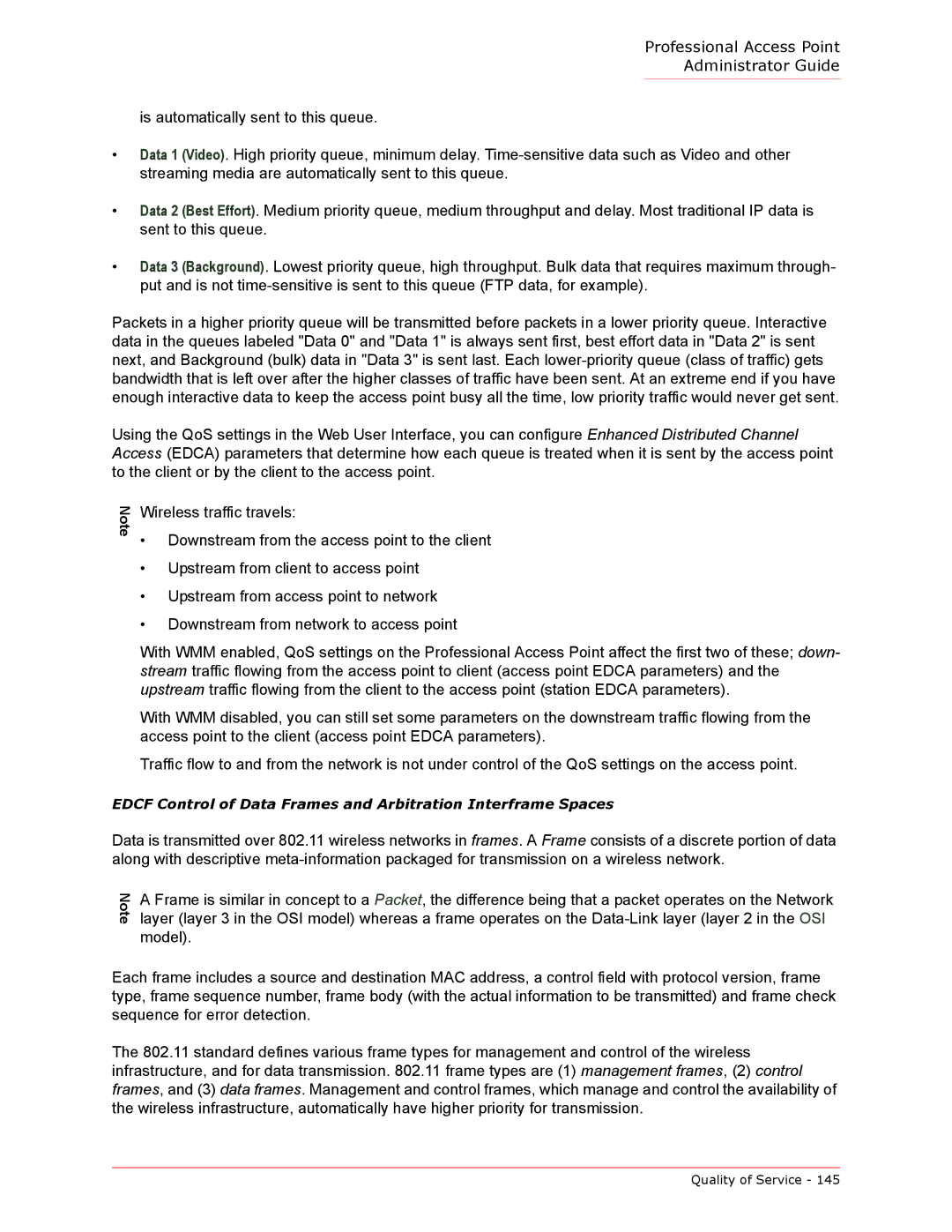
Professional Access Point
Administrator Guide
is automatically sent to this queue.
•Data 1 (Video). High priority queue, minimum delay.
•Data 2 (Best Effort). Medium priority queue, medium throughput and delay. Most traditional IP data is sent to this queue.
•Data 3 (Background). Lowest priority queue, high throughput. Bulk data that requires maximum through- put and is not
Packets in a higher priority queue will be transmitted before packets in a lower priority queue. Interactive data in the queues labeled "Data 0" and "Data 1" is always sent first, best effort data in "Data 2" is sent next, and Background (bulk) data in "Data 3" is sent last. Each
Using the QoS settings in the Web User Interface, you can configure Enhanced Distributed Channel Access (EDCA) parameters that determine how each queue is treated when it is sent by the access point to the client or by the client to the access point.
Note
Wireless traffic travels:
•Downstream from the access point to the client
•Upstream from client to access point
•Upstream from access point to network
•Downstream from network to access point
With WMM enabled, QoS settings on the Professional Access Point affect the first two of these; down- stream traffic flowing from the access point to client (access point EDCA parameters) and the upstream traffic flowing from the client to the access point (station EDCA parameters).
With WMM disabled, you can still set some parameters on the downstream traffic flowing from the access point to the client (access point EDCA parameters).
Traffic flow to and from the network is not under control of the QoS settings on the access point.
EDCF Control of Data Frames and Arbitration Interframe Spaces
Data is transmitted over 802.11 wireless networks in frames. A Frame consists of a discrete portion of data along with descriptive
Note
A Frame is similar in concept to a Packet, the difference being that a packet operates on the Network layer (layer 3 in the OSI model) whereas a frame operates on the
Each frame includes a source and destination MAC address, a control field with protocol version, frame type, frame sequence number, frame body (with the actual information to be transmitted) and frame check sequence for error detection.
The 802.11 standard defines various frame types for management and control of the wireless infrastructure, and for data transmission. 802.11 frame types are (1) management frames, (2) control frames, and (3) data frames. Management and control frames, which manage and control the availability of the wireless infrastructure, automatically have higher priority for transmission.
Quality of Service - 145
